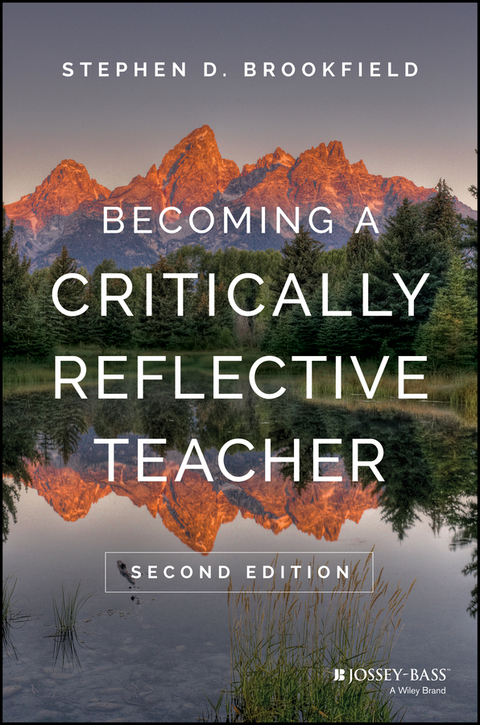Description
Efnisyfirlit
- Cover
- Title Page
- Copyright
- Preface
- Acknowledgments
- About the Author
- Chapter 1: What Is Critically Reflective Teaching?
- Critically Reflective Teaching
- Types of Assumptions
- How Do We Examine Assumptions?
- So What Makes Reflection Critical?
- Critical Reflection as the Illumination of Power
- Critical Reflection as Uncovering Hegemony
- Conclusion
- Chapter 2: Uncovering Assumptions of Power
- Commonsense Assumptions about Good Teaching
- Assumptions of Power
- The Circle
- The Teacher as Fly on the Wall
- Conclusion
- Chapter 3: Uncovering Hegemonic Assumptions
- I Must Motivate My Students by My Charismatic Singularity
- It’s All under Control
- Washing Clean the Stain of Resistance
- The Perfect‐Ten Syndrome
- Deep Space Nine: The Answer Must Be out There Somewhere
- We Meet Everyone’s Needs
- I Can Fix Racism (Sexism, Classism, Ableism)
- Conclusion
- Chapter 4: The Four Lenses of Critical Reflection
- Students’ Eyes
- Colleagues’ Perceptions
- Personal Experience
- Theory
- Conclusion
- Chapter 5: Clarifying the Benefits of Critical Reflection
- It Helps Us Take Informed Actions
- It Helps Us Develop a Rationale for Practice
- It Helps Us Survive the Emotional Roller Coaster of Teaching
- It Helps Us Avoid Self‐Laceration
- It Enlivens Our Classrooms
- It Keeps Us Engaged
- It Models the Democratic Impulse
- It Increases Trust
- Conclusion
- Chapter 6: Seeing Ourselves through Students’ Eyes
- Students’ Eyes and Student‐Centeredness
- The Unwitting Diktat: An Illustration of Power Dynamics
- The One‐Minute Paper
- The Muddiest Point
- The Learning Audit
- Clickers
- Social Media
- TodaysMeet
- The Critical Incident Questionnaire
- Using CIQs with Small and Large Classes
- Letter to Successors
- Conclusion
- Chapter 7: Learning from Colleagues’ Perceptions
- Creating Critically Reflective Conversations
- Start‐up Sentence Completion
- Beginning the Conversation with Critical Incidents
- Chalk Talk
- The Circular Response Method
- Bohmian Dialogue
- Critical Conversation Protocol
- Conclusion
- Chapter 8: Team Teaching as Critical Reflection
- Providing Emotional Grounding
- Modeling Critical Reflection for Students
- Negotiating Vulnerability
- Learning Risk and Embracing Uncertainty
- Confirmatory Critical Reflection
- Conclusion
- Chapter 9: Using Personal Experience
- Graduate Study
- Professional Development Workshops
- Conference Attendance
- Recreational Learning
- Conclusion
- Chapter 10: Learning from Theory
- What Reading Theory Does for Us
- Narrative Theorizing
- Scholarly Personal Narrative
- A Productive Theoretical Insight: Repressive Tolerance
- Conclusion
- Chapter 11: Incorporating Social Media and Back‐Channel Communication
- Assumptions about Social Media
- Social Media as a Lens on Practice
- Power and the Use of Social Media
- Back‐Channel Communication and Student Decision Making
- Conclusion
- Chapter 12: Applying Critical Reflection to Teaching Race and Racism
- Why Is Critical Reflection on Race and Racism So Difficult?
- Using Narrative Disclosure to Set a Tone for Examining Race
- Colleagues as Critical Lenses on Race
- What Students’ Eyes Tell Us about Examining Race in the Classroom
- Conclusion
- Chapter 13: Negotiating the Risks of Critical Reflection
- Impostorship
- Dealing with Impostorship
- Cultural Suicide
- Avoiding Cultural Suicide
- Lost Innocence
- Marginalization
- Avoiding Political Marginalization
- Conclusion
- Chapter 14: Practicing Critically Reflective Leadership
- What Is Critically Reflective Leadership?
- Embedding Critical Reflection in Meetings
- Modeling Critically Reflective Leadership
- Conclusion
- Bibliography
- Index
- End User License Agreement







Reviews
There are no reviews yet.